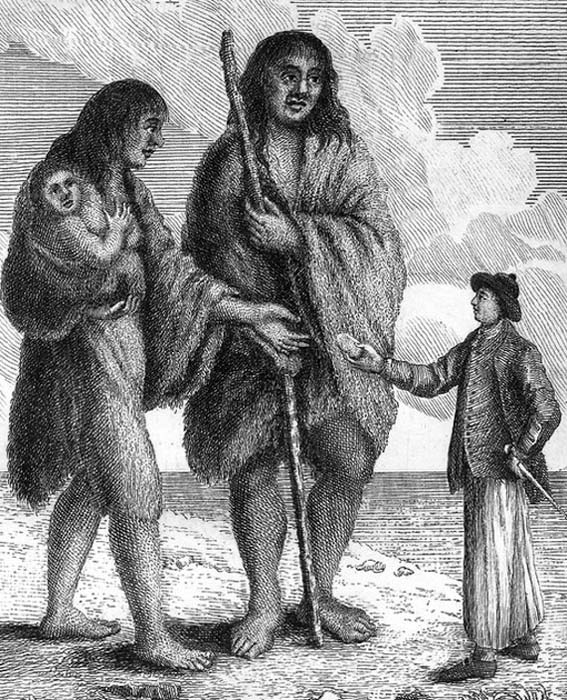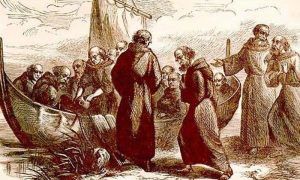
The Emerald Isle Meets the Subcontinent: Unearthing the Enduring Legacy of India’s Duhare Irish
In the sprawling, vibrant tapestry of India, where countless cultures, languages, and histories intertwine, there exists a unique, often overlooked thread: the Duhare Irish. They are a community whose very existence is a testament to the complex, sometimes paradoxical, legacy of the British Raj – a living embodiment of the human connections forged in the crucible of empire, transcending the rigid boundaries of race and origin. Their story is one of identity, resilience, and the enduring power of heritage, a fascinating blend of shamrocks and spice, Gaelic lilts and Hindi phrases.
To understand the Duhare Irish, one must first cast their mind back to the 18th, 19th, and early 20th centuries. Ireland, then largely under British rule, was a land of profound poverty, particularly in the wake of the devastating Great Famine of the mid-19th century. For many young Irish men, Catholic and Protestant alike, the British Army offered one of the few avenues for employment, escape, and a steady income, however meagre. Thus, tens of thousands of Irish soldiers found themselves dispatched to the far-flung corners of the British Empire, with India, the "Jewel in the Crown," being a primary destination.
These soldiers, often from humble backgrounds, arrived in a land vastly different from their own. They served in cantonments across the subcontinent, from the dusty plains of Uttar Pradesh to the humid coasts of Madras. While the British colonial administration vehemently discouraged fraternisation between European soldiers and local Indian women, such relationships were an undeniable reality. Love, or at least companionship, found a way to blossom amidst the strictures of colonial society. It was from these often unsanctioned unions between Irish soldiers and Indian women that the Duhare Irish community began to emerge.

The term "Duhare" itself is rich with meaning and a subject of some debate. Some believe it derives from the Hindi word "Doh-Raahe," meaning "two paths" or "two ways," perfectly encapsulating their dual heritage. Others suggest "Dohri" (double) or even "Do-Hare" (two hearts). Regardless of its precise etymology, the term speaks volumes about their liminal existence – neither fully Irish nor fully Indian, but a unique synthesis of both. They became a distinct subset within the broader Anglo-Indian community, sharing many characteristics but retaining a particular connection to their Irish paternal lineage.
Life in the cantonments was a peculiar blend of cultures. The Irish soldiers brought with them their Catholic faith, their surnames – Murphy, Kelly, O’Brien, Ryan, Fitzgerald, McCarthy – and perhaps a faint memory of home. Their Indian wives and mothers brought their languages (Hindi, Urdu, Bengali, Tamil, depending on the region), their culinary traditions, their social customs, and their profound connection to the land. The children of these unions grew up straddling two worlds, navigating a complex social hierarchy that often placed them in an ambiguous position. They were, in many ways, colonial society’s forgotten children, yet they forged a vibrant identity all their own.
"We grew up knowing we were different," recounts Patricia O’Brien, a third-generation Duhare Irish descendant from Lucknow, her voice carrying the faint lilt of the Queen’s English common to many Anglo-Indians. "My grandmother would tell stories of her father, an Irish soldier, who sang songs in a language she didn’t fully understand but loved nonetheless. Our home was a mix – we had a statue of the Virgin Mary next to an ornate Indian lamp, we ate biryani with Irish stew, and spoke English with our parents, but Hindi with our neighbours."
Religion played a crucial role in binding the Duhare Irish community. Predominantly Roman Catholic, their faith provided a spiritual anchor and a connection to their European heritage. Churches, often established by Irish priests and nuns, became vital social hubs. Christmas, with its blend of European and Indian traditions, was a grand affair, as was Easter. And, of course, St. Patrick’s Day, celebrated with a distinctly Indian flair – perhaps a Mass followed by a community gathering featuring traditional Indian snacks alongside cups of chai, the shamrock perhaps painted on a forehead rather than pinned to a lapel.
The Duhare Irish often found employment in professions associated with the British administration – the railways, customs, telegraph services, and the lower ranks of the police and military. These roles offered a degree of stability and social standing, but also cemented their position as intermediaries, closer to the British than the general Indian population, but never fully accepted as European. This "in-betweenness" became a defining characteristic, shaping their perceptions of themselves and their place in the world.
As India hurtled towards independence in 1947, the future of communities like the Duhare Irish became uncertain. With the departure of the British, many felt a profound sense of displacement. Their ties to Ireland were distant, their Indian identity complex and sometimes questioned by those who saw them as a relic of colonialism. A significant number emigrated, seeking new lives in the UK, Australia, Canada, or other Commonwealth nations, further diminishing the community’s numbers in India.
Those who remained faced the challenge of adapting to a new, independent India. They had to redefine their identity, to forge a place for themselves in a nation eager to shed the vestiges of its colonial past. Many integrated, some seamlessly, others with more difficulty, into mainstream Indian society, while striving to preserve their unique heritage.
Today, the Duhare Irish community, though smaller and more dispersed, continues to exist, primarily in cities with a strong colonial history like Lucknow, Kanpur, and Kolkata. Their legacy is evident in the surnames in phone directories, in the old photographs adorning mantelpieces, and in the oral histories passed down through generations. There are still community gatherings, often centred around family events or religious festivals, where stories are shared, old songs are sung, and a sense of shared history is rekindled.

"My grandfather used to say we have the fighting spirit of the Irish and the enduring heart of India," says Maria Fernandez (née McCarthy), now in her seventies, sipping tea in her modest Kanpur home. "It wasn’t always easy. Growing up, some called us ‘firangis’ (foreigners) and others called us ‘half-breeds.’ But we learned to be proud of who we are. We are the bridge between two great cultures, two great histories."
One fascinating aspect of their enduring legacy is the ongoing, albeit informal, connection some maintain with Ireland. Through the internet, descendants have begun to trace their paternal lines, connecting with long-lost relatives in Ireland, discovering the villages and towns from which their ancestors departed generations ago. These connections offer a sense of closure, a deeper understanding of their roots, and a reaffirmation of their unique identity.
The story of the Duhare Irish is more than just a historical footnote; it’s a powerful narrative about identity in a globalised world. It challenges simplistic notions of race and nationality, demonstrating how human connections can transcend political boundaries and historical animosities. It reminds us that history is not just about grand narratives of empires and nations, but also about the individual lives lived, the loves found, and the communities forged in the most unexpected of circumstances.
In an India increasingly confident in its own identity, the Duhare Irish stand as a subtle, yet profound, reminder of a complex past. They are a living testament to the human capacity for adaptation, cultural synthesis, and the stubborn refusal of memory to fade. Their shamrock-infused hearts beat with the rhythm of the subcontinent, a unique and beautiful echo of two worlds, forever intertwined. As the generations pass, the community may evolve, but the spirit of the Duhare Irish – those with two hearts, two paths, yet one undeniable identity – will continue to be a cherished part of India’s endlessly diverse human story.


